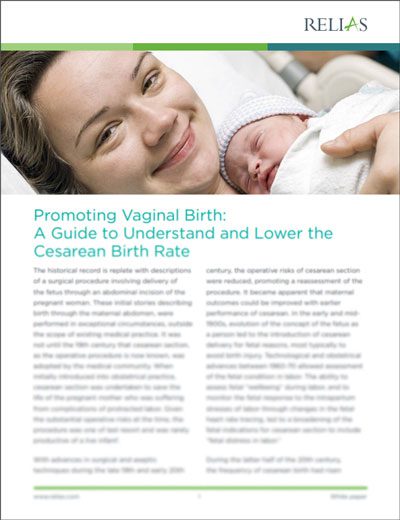Nearly 40 years ago, W. Edwards Deming (a famous statistician known for his work in the quality management field) was quoted as saying, “Uncontrolled variation is the enemy of quality.”
In today’s healthcare environment, this powerful statement is still all too relevant.
While clinicians often argue that some degree of clinical variation is expected, unnecessary variation in healthcare refers to discrepancies that cannot be explained by a patient’s illness, medical needs, socioeconomic challenges or physician judgment. Reducing unnecessary clinical variation is proven to drive cost efficiency and improve patient outcomes. Knowing this, and with some improvements made, there still is more work to be done.
We must ask ourselves—what is the variation in our healthcare system? Does it impact our patients and outcomes (clinical and financial) negatively? And if the answer is yes, we need to seek to understand what the variation is, why it is occurring, and start improving and hardwiring the changes for long-term success.
Clinical Impact
In an unsettling New York Times article Go to the Wrong Hospital and You’re 3 Times More Likely to Die, the nation’s alarming rate of variation in care was brought to light based on a study of 22 million hospital admissions. The study emphasizes the differences in outcomes between hospital to hospital and region to region. These differences are largely due to variation in protocols, practices, measurement, oversight structures, and leadership/organizational culture, etc.
In this first-ever comprehensive study comparing how well individual hospitals treated a variety of medical conditions, the findings indicated that patients at the worst American hospitals were three times more likely to die and 13 times more likely to have medical complications than if they visited one of the best hospitals. Although the study highlighted important differences among hospitals, the researchers also recognized that patients have little information about those differences.
Not only is variation an opportunity to significantly improve the quality of care, it’s also an opportunity to be transparent and educate patients and families so they can be more informed of their healthcare service providers.
Financial Impact
Unwarranted variation in clinical care represents an estimated $20M-$30M per $1B in revenue of actionable savings opportunity for a typical organization. Identifying variation allows providers to assess the reason, location and financial impact of those gaps. Are pharmacy costs, supply costs, operating room time, implant costs, etc., creating the discrepancies?
To make matters even more urgent, U.S. health spending is projected to grow approximately 5.5% annually from 2017-2026, according to the Centers for Medicare & Medicaid Services.
Identifying Opportunities for Improvement
Patient care is complex, and reducing variation and waste optimizes resource utilization. As healthcare organizations transition to a new mindset of eliminating variation and standardized care it is imperative to involve providers and clinical staff in the conversation.
To reduce the unintended variation that introduces risk—whether in the ED, the delivery room, or anywhere in the acute setting—it’s true that the behavior of the whole team must be changed. We know that highly reliable organizations that continually improve patient safety recognize the need for strong, motivated care teams and provide them with the framework for continuous improvement.
The Provider Paradigm
Understanding that care variation reduction is a team effort, we must hold providers accountable for initiating and leading this charge. While this may seem as somewhat of “a given” in healthcare, this pathway to change is more of an obstacle than some care to admit.
 As an uncomfortable truth, many providers today are not true advocates of outcome data reporting and transparency in the name of possibly changing their practice. Many providers fear “looking bad” compared to their peers and this stalls transparency, accountability, and change. Additionally, leaders of healthcare systems are challenged with successfully changing this paradigm with providers. So, the status quo often wins out over improvement.
As an uncomfortable truth, many providers today are not true advocates of outcome data reporting and transparency in the name of possibly changing their practice. Many providers fear “looking bad” compared to their peers and this stalls transparency, accountability, and change. Additionally, leaders of healthcare systems are challenged with successfully changing this paradigm with providers. So, the status quo often wins out over improvement.
It’s really a significant issue as providers are the primary drivers of healthcare spending and quality. Providers are the entry point into a health system, which is why health systems must work with their providers to deliver quality care while controlling costs. Providers direct patient care; choosing outpatient treatment versus admissions, ordering diagnostic tests, prescribing the course of treatment, and discharging a patient from the hospital.
Making Change
To identify opportunities in clinical variation, organizations must:
- Engage physicians and clinical staff to lead clinical practice standardization and financial efficiency efforts. Clinical leadership provides the expertise and knowledge to drive sustainable change, and should be a cross-functional team.
- Empower collaboration amongst executive leadership, clinicians, supporting resources, and analytics. Change management provides the foundation for positive change.
- Equip providers across the organization with resources to implement new initiatives and clinical protocols. By providing necessary resources and performance insights, teams can monitor progress against process improvement initiatives and provide critical feedback.
How Relias Can Help
By recognizing that variation is directly correlated to patient harm, providers and care teams can take the crucial first step in improving patient safety. For example, today’s national maternal mortality crisis is largely contributed to variation in care amongst providers, as highlighted in this previous blog post. Reducing variation is a major component of Relias OB’s (formerly GNOSIS™) success in improving care for mothers and babies nationwide.
As a patented assessment-driven education and analytics solution that uses data to transform how doctors and nurses learn, Relias OB’s innovative platform enables labor and delivery teams to:
- close competency gaps for both nurses and providers
- identify and address areas of care variation
- increase patient safety and reduce risk of OB claims
Relias OB offers a suite of AWHONN validated and co-authored courses for providers and nurses on promoting vaginal birth, fetal assessment and monitoring, shoulder dystocia, obstetrical hemorrhage, and hypertensive disorders in pregnancy.
Reducing variation in care delivery saves lives, but if you don’t measure variation, how do you know?

Promoting Vaginal Birth: A Guide to Understand and Lower the Cesarean Birth Rate
Currently in the US, we are faced with an unacceptably high rate of cesarean births along with the associated short and long-term risks to both mothers and babies when these procedures are not medically necessary. Hospitals, providers, and nurses need insight into the factors driving these high rates, and access to effective strategies to promote vaginal birth and maintain cesarean birth rates at targeted levels.
Download White Paper →





